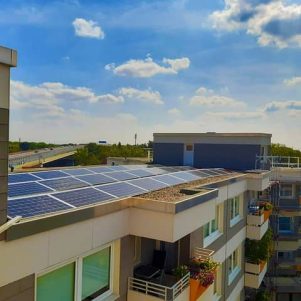The rise of renewable energies in Spain brings with it the need to establish the contracts that will govern the relationships between the developers and the owners of the land. The most common contracts for the installation of both wind farms and photovoltaic power stations are outlined below.
Introduction to the contractual typology in energy matters
Within the energy sector (and more specifically in the case of renewable energies), when starting an energy project, it is generally necessary to enter into a previous contractual relationship. The contracts most used are the following ones:
- Sale and purchase contracts
- Leases contracts
- Contracts for transfer of surface rights.
The purchase and sale contract in the energy sector
Despite being a very common contract in the commercial practice (in practically any of its fields), this type of contract is not the most used in the energy sector and in renewable energy projects. In fact, it remains as a background alternative with respect to the rest of the aforementioned contracts.
One of the reasons is the fact that the developers of energy projects – that is, the people who implement the project together with the investor(s) – do not wish to make use of this contractual typology. They prefer to use the land only for the time required by the project, without, in any case, owning it.
Lease contracts
At present, the lease agreement is the most common agreement between the project developer and the landowner. However, in the case of a long-term contract – usually between 25 and 40 years, due to the long-term profitability of most renewable energy projects – it raises many concerns that need to be cleared unambiguously in the clauses.
In this sense, special attention should be paid to the clauses that deal with the expenses to be assumed by each party, the rent to be received or paid both during the development phase of the project, and when the installation is in operation, or the possible causes of termination of the contract.
It is also advisable to state in the lease contract who will be responsible for handling the procedures to make the change from rustic use to industrial use of the land, as well as its reversion with the termination of the contract. As a general rule this management should correspond to the developer of the project.
Contract for the transfer of surface rights
The contract for the transfer of surface rights is a good alternative to sale and lease contracts in the energy sector. As an exception to the property right, the surface right allows the owner to build, plant or sow on other people’s land, making the property of what has been built, planted or sowed his own in a given period of time (which cannot exceed 99 years). The reversion of what is built takes place once this period elapses, unless agreed otherwise, resolving any personal or real rights existing on the property
Among the most relevant issues that the contract for the transfer of surface rights must contemplate, we stand out:
- The regulation of the duration of the contract
- The surface fee to be paid
- The reversion of the ownership of the installation to the owner of the land together with potential compensation after the term of the contract
- The causes of termination of the contract.
Advantages of the contract for the transfer of surface rights
Advantages for the developer
- As it is a real right, the formalization in public deed and the registration in the Land Registry is mandatory, unfolding effects before third parties and generating a greater legal security
- The developer must not deposit any bond or guarantee before the corresponding body, nor is it subject to the Urban Rents Law (Ley de Arrendamientos Urbanos or LAU), thus avoiding the rights and obligations emanating from that legal body
- The developer will pay the owner the surface royalty of the land on which he is going to build, but he will be able to tax what is built for its exploitation.
Advantages for the owner
At the end of the surface contract, the owner of the land recovers his property, making his own the tacit capital gain produced by the increase in the value of the land without having invested in the project.
In light of these advantages, the contract for the transfer of surface rights is taking on a significant role.
Andrea García
For further information regarding the transfer of surface rights in Spain,





